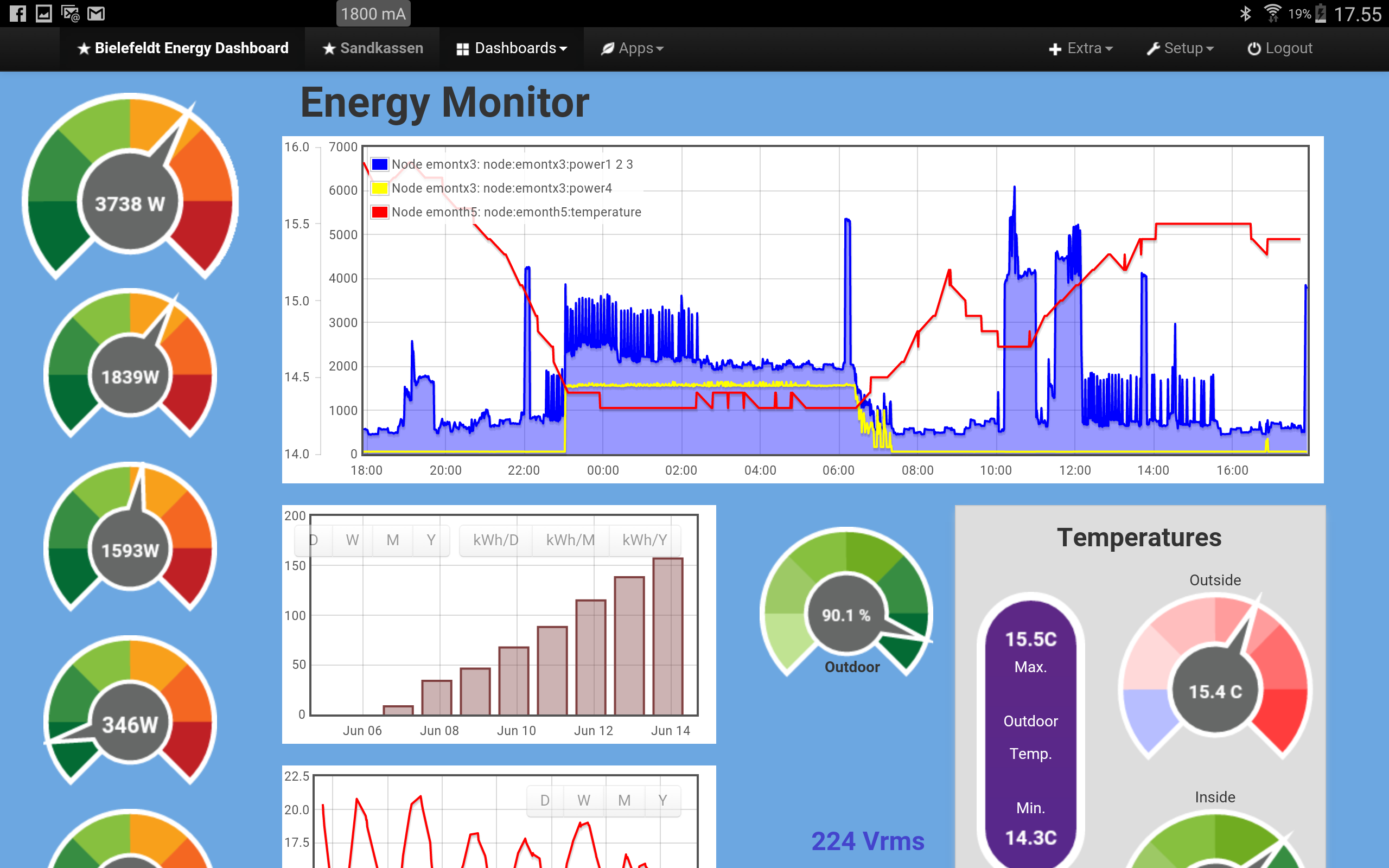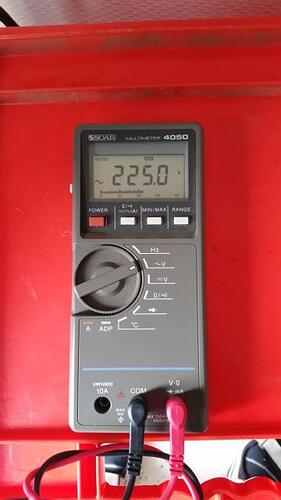Dear Robert Wall
I have done some research tonight
Definition of Real Power / RMS Power
I have studied definitonen of Real Power, RMS Power.
Alternating voltage ranges between 0 and about 325 V.
The power value / RMS value of 325 V is calculated as
peak (325V = square root of 2 * 230)
The square root of 2 = 1.4142
Thus reached the 230 Volt
It has decided to enter the alternating voltage to the value of the corresponding constant DC voltage that provides the same power (heat) in electrical resistance. It is called Vrms. Each measuring instrument is adapted to measure Vrms AC voltages, so there should be no particular order to carry out such measurement. I hope you agree?
Nissan Charger
As previously described, is a measurement of emontx on our charger for our Nissan Electric car, 33% too low, but I do not know of any. phase shift of the switch-mode charger built into the car.
Electric Heater simulating Car Charger.
Therefore I test the same circuit just with a 2000 Watt heater, and measured the same way.
Here I get a measuring current of 8.37 A

The voltage at the test site is measured at 225, but emontx3 is measured at 230 V at the switchboard.
There are about 25 meters between the two points and with a load of this size, it is expected with a voltage drop of 5V
The calculated power is thus 8.37 x 225V = 1883.25 W
EmonTx3 and emonPi says 1252W on CT4 with max 4,5 kW
There must be corrected for the rest effect to a Network switch which run on the same group of 33W
So a total of 1219 W pure resistive load according emontx3.
A difference of 54% between the two measurements.
I have tried me with a second CT sensor, but it gives some same result.
I have adjusted Vrms down with the following calibration 0.0087621, to emontx3 to measure correctly AC value.
It would only bring power up to 1391 W if no calibration was inserted.
emonHUB
[[8]]
node name = emontx3
[[[Rx]]]
names = Power1, POWER2, Power3, POWER4, Vrms, temp1, temp2, temp3, temp4, temp5, temp6, pulse
datacodes = h, h, h, h, h, h, h, h, h, h, h, L
scales = 1,1,1,1,0.0087621,0.1,0.1, 0.1,0.1,0.1,0.1,1
units = W, W, W, W, V, C, C, C, C, C, C, P
Alternative measure:
I have a Efergy energy meters installed as reference.
www.efergy.com, an English power measurement consumer company.
It measures the pulses via the electricity meter and displays power measurement in a display.
Efergy reading
I swipes Efergy to 719 W

emontx3 reading
emontx3 read to 676W at the same time.
Power up heater
So I turn on my fan heater, and reads again after it has found a quiet level.
Efergy reading
Efergy read to 2579W a difference of 1860W, all very close to the 1883W I have measured and calculated with my instruments.
I thus has two independent measurements that says that my fan heater uses about 1860-1883W.
emontx3
emontx3 says while 1861W minus the prior reading 676W = 1185W, so close to the 1219W I previously measured.
The difference may be due to that one measurement is made with CT4, and the other with CT3.
Thus, there is a very big difference in the measured values.
Efergy and own measurements 1860-1883W
emontx3 1185 - 1219W
A difference of about 50%.
I am so bad frustrated that there is so great variation between the measured on emontx3 and I can measure and calculate manually.
I have an extra emontx3 and 4 additional CT sensors in stock, and I should like to try to replace them all to see if it makes any difference. There may indeed be a cause.
Hope you can figure out if I’m way off with some of my assumptions. Maybe I missed something.




